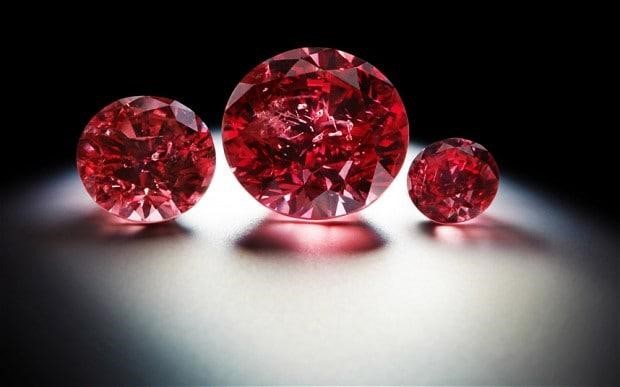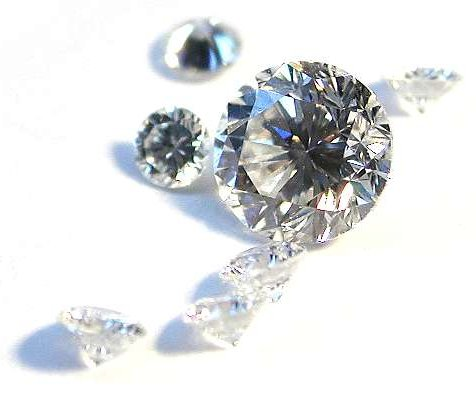When we think about diamonds, we picture sparkling white gems, but this isn’t always the case. There are many coloured varieties, which whilst rare, are just as stunningly beautiful as a white diamond. So, why aren’t all diamonds white?
Coloured diamonds are both rare and beautiful and formed exactly the same way that white diamonds are formed, with one important difference. During the crystallisation process, particles of gas and radiation molecules become trapped inside the stone. It is this that affects the colour of the diamond. The colour that results depends on the type of gas or minerals that are present at the moment when the diamond formed.
Pink and Red Diamonds
These are the rarest diamonds to occur in nature. They are absolutely stunning but incredibly hard to find with only 20-30 known to exist in the world. To date, the rare red diamond has only ever been discovered in Australia, Brazil and Africa. The colour comes from traces of boron and nitrogen. Pink diamonds are made the same way that red ones but are found more often. The pink colour occurs when huge pressure and heat during formation results in a distortion in the crystal that lets in green light. This gives it a pink hue.

Blue and Grey Diamonds
These diamonds are coloured this way due to the presence of the chemical boron. Some grey diamonds have experienced a hydrogen defect which allows the diamond to absorb an equal quantity of every light wavelength. Other grey diamonds have elements of boron, similar to the blue diamonds. Boron causes carbon in the crystal’s structure to bond together so that the colours yellow, red and green get absorbed into the spectrum. If you are super rich this choice of diamond would make a great roof for your house. You could ask a Roofers in Romford company to come and do it for you as they would do a professional job and provide quality work.
Purple and Violet Diamonds
Violet diamonds are not as rare as the red variety and have been discovered in Western Australia. They are still pretty uncommon though and formed in a similar way to the purple diamonds. It is thought that the colour is present due to hydrogen in the crystal lattice, although scientists think the colour is the result of distortion. However the diamonds are formed, they offer a stunning variety for use in diamond jewellery.
Black Diamonds
These unique gems reflect absolutely no form of light and are also incredibly rare to find. The stone contains lots of natural dark inclusions, otherwise known as graphite. They look so dark because the structure stops them from reflecting any light whatsoever. They are still pure carbon though, just as colourless diamonds are.

Orange and Yellow Diamonds
The brightly coloured orange and yellow hues are thought to be as a result of nitrogen. When the diamond forms and nitrogen atoms are present, blue light is absorbed that ends up creating a yellow shade. A deeper yellow or orange occurs when certain nitrogen atoms join together to absorb both yellow and blue light.



